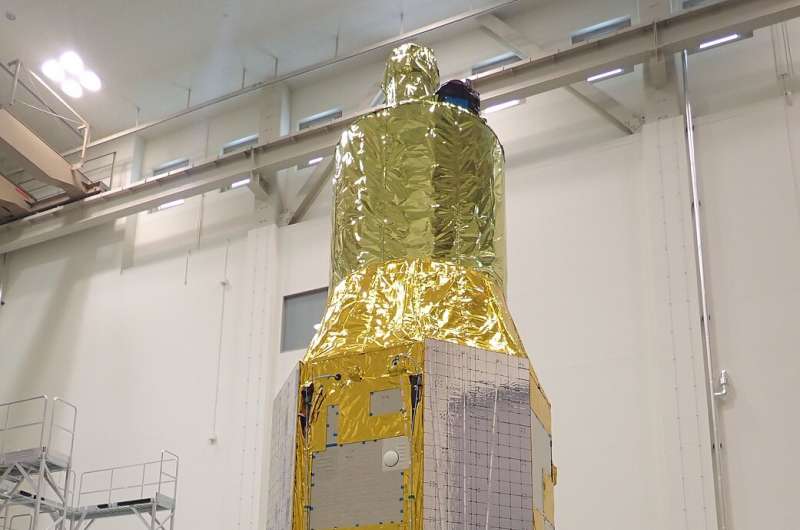New collaborative X-ray observatory stands tall as testing begins

The X-ray Imaging and Spectroscopy Mission will greatly expand our knowledge of the high-energy universe, and recently passed two key milestones on its path to observing the cosmos.
Nicknamed XRISM (pronounced "crism"), the mission is a collaboration between the Japan Aerospace Exploration Agency (JAXA) and NASA, with participation by ESA (the European Space Agency), to investigate the X-ray universe using high-resolution imaging and spectroscopy.
"In May, the spacecraft components—including its two instruments, named Resolve and Xtend—were mechanically and electrically integrated onto the observatory for the first time," said Project Manager Lillian Reichenthal at NASA's Goddard Space Flight Center in Greenbelt, Maryland. "This was a significant milestone in the development of the spacecraft for JAXA."
Having all of the systems installed initiates a new round of spacecraft testing to ensure everything works well together. Engineers integrate and test the equipment at different stages—first individual components, then assembled systems and instruments, and finally the full observatory. These tests subject the spacecraft and instruments to the conditions expected during launch and space operations.
In another milestone, testing and calibration of two identical, Goddard-built X-ray Mirror Assemblies (XMAs) was completed, and the mirrors were shipped to Japan in late May and early June. The XMAs underwent separate environmental testing and will receive their final optical alignment before being installed on each instrument in the fall.
The Resolve instrument will precisely measure low-energy X-rays to extract information about the physical state and motion of ionized gases associated with supernova remnants, galaxy clusters, and outflows streaming from supermassive black holes in active galaxies. The Xtend instrument, detecting X-rays of similar energy, will produce images with a field of view about 150 times larger than Resolve, extending XRISM's cosmic grasp.
"The science from XRISM will be extraordinary," said Goddard's Brian Williams, the NASA project scientist for the mission. "The Resolve instrument promises to open a new window on the high-energy universe." Resolve's detector system was also developed at Goddard.
XRISM is expected to launch in 2023 on a JAXA HII-A rocket from Japan's Tanegashima Space Center.
Provided by NASA's Goddard Space Flight Center





















